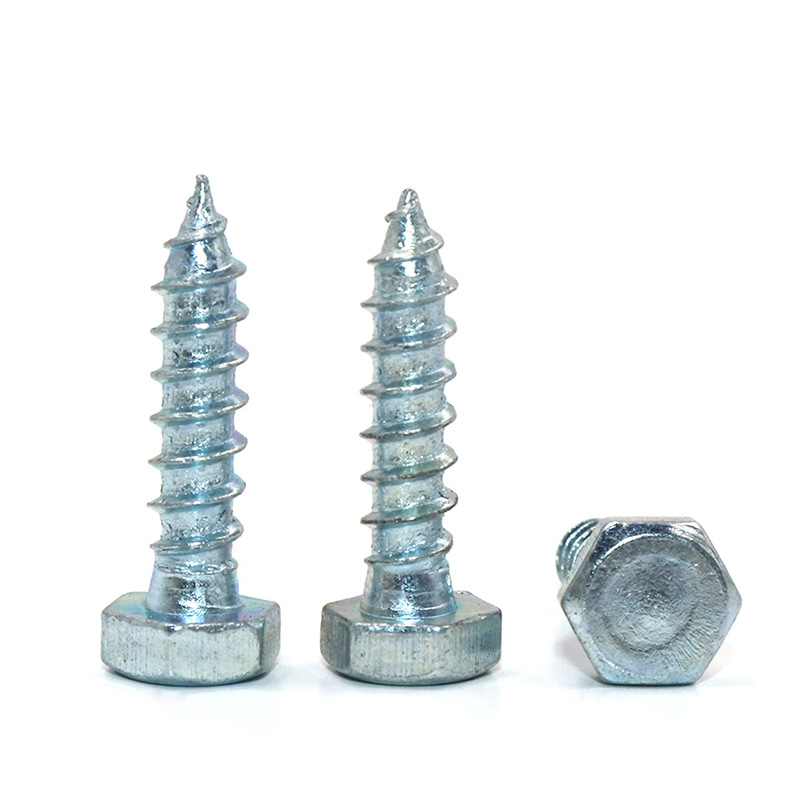

self tapping screws for plastic hole sizes
12月 . 06, 2024 05:51 Back to list
self tapping screws for plastic hole sizes
Understanding Self-Tapping Screws for Plastic Hole Sizes
Self-tapping screws have become an essential component in various industries, particularly when joining materials where conventional screws may not provide the necessary grip or stability. Among the materials they are designed to work with, plastic is particularly notable due to its widespread use in manufacturing and assembly applications. This article will explore the significance of self-tapping screws specifically in relation to plastic hole sizes, offering insights into size specifications, installation techniques, and best practices.
The Basics of Self-Tapping Screws
Self-tapping screws are fasteners that can create their own hole as they are driven into a material. Their design includes sharp threads and a pointed tip, which allows them to penetrate through the surface without the need for a pre-drilled hole in most cases. This characteristic makes them ideal for plastic applications where time, efficiency, and structural integrity are paramount.
There are two main types of self-tapping screws thread-forming and thread-cutting. Thread-forming screws displace material to create threads in plastics, while thread-cutting screws remove material to create a hole. The choice between the two largely depends on the type of plastic being used and the specific requirements of the application.
Importance of Hole Size in Plastics
When working with self-tapping screws, hole size is a critical factor that can significantly influence the effectiveness of the assembly. Hole size affects the screw's ability to grip the material properly, which impacts the strength and stability of the connection. Too small of a hole may cause excessive stress and potential damage to the plastic, while a hole that is too large may result in a loose fit that compromises the joint's integrity.
Typically, the rule of thumb is to have a pilot hole that is about 75% of the screw's diameter for softer plastics. However, for harder plastics, like polycarbonate or nylon, a different approach may be necessary. It is vital to consult material specifications and screw manufacturers' guidelines to determine the ideal hole size for different applications.
self tapping screws for plastic hole sizes

Best Practices for Using Self-Tapping Screws in Plastic
1. Selecting the Right Screw Not all self-tapping screws are created equal. It is crucial to choose screws that are specifically designed for use with plastic materials. These screws often feature a fine thread or other design elements that ensure they grip the material effectively without causing damage.
2. Determining Ideal Hole Sizes When creating holes for self-tapping screws, consider the type of plastic and the screw diameter. For softer plastics, a slightly smaller hole may be suitable, while harder plastics might require a more precise approach. Using a drill gauge can ensure accuracy in hole dimensions.
3. Maintaining Proper Torque Over-tightening screws can cause cracks or deformities in plastic materials. It is recommended to use a torque driver that helps to apply controlled torque, thus preventing damage. Manufacturers often provide specifications for optimal torque levels based on the specific screw and plastic type.
4. Choosing the Correct Drill Bit When pre-drilling, selecting the right size drill bit is essential. Use drill bits that match the size of the pilot holes, as specified by the screw manufacturer. This ensures the compatibility of the screw with the plastic.
5. Testing and Adjusting It is always wise to conduct a test assembly if dealing with a new project or material. This allows for adjustments to be made on the hole size and screw choice before final assembly, minimizing waste and ensuring optimal performance.
Conclusion
Self-tapping screws offer a versatile and efficient way to join plastic components, provided that the correct practices are followed. By understanding the relationship between screw types, hole sizes, and application requirements, manufacturers can enhance product durability and functionality. As advancements in plastic materials and fasteners continue, mastering the use of self-tapping screws will remain a valuable skill in the industry, ensuring robust and reliable assemblies that meet the demanding needs of modern applications. Whether working on small-scale projects or large industrial assemblies, proper attention to detail regarding screw selection and hole sizing can make all the difference in achieving high-quality results.
Latest news
-
Hot Dip Galvanized Bolts-About LongZe|High Strength, Corrosion Resistance
NewsJul.30,2025
-
High-Strength Hot Dip Galvanized Bolts - Hebei Longze | Corrosion Resistance, Customization
NewsJul.30,2025
-
Hot Dip Galvanized Bolts-Hebei Longze|Corrosion Resistance&High Strength
NewsJul.30,2025
-
High-Strength Hot-Dip Galvanized Bolts-Hebei Longze|Corrosion Resistance&High Strength
NewsJul.30,2025
-
Hot Dip Galvanized Bolts-Hebei Longze|Corrosion Resistance&High Strength
NewsJul.30,2025
-
Hot Dip Galvanized Bolts - Hebei Longze | Corrosion Resistance, High Strength
NewsJul.30,2025

